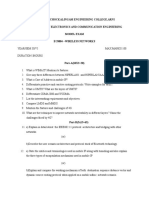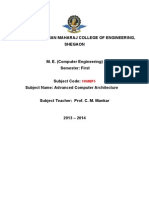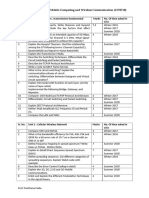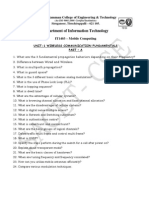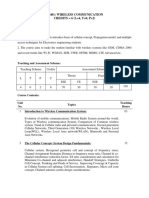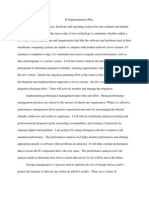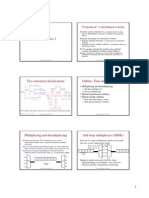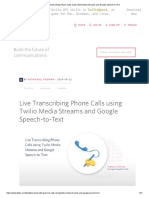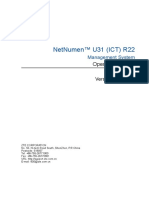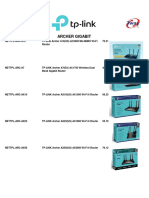0% found this document useful (0 votes)
59 views3 pagesWCN Assignments
This document contains 8 assignments related to the course "Wireless Communication and Networks" at Rayat Shikshan Sanstha’s Karmaveer Bhaurao Patil College of Engineering in Satara, India. Each assignment contains 5-7 questions related to topics covered in 6 units of the course, including introduction to wireless communication, wireless network planning and operation, digital cellular networks, wireless LAN and Bluetooth technology, mobile data networks, and wireless access protocols. The assignments cover key concepts and require students to explain technologies such as GSM, CDMA, GPRS, WLAN, Bluetooth, and wireless application protocols.
Uploaded by
Vaibhav sampat abhangCopyright
© © All Rights Reserved
We take content rights seriously. If you suspect this is your content, claim it here.
Available Formats
Download as PDF, TXT or read online on Scribd
0% found this document useful (0 votes)
59 views3 pagesWCN Assignments
This document contains 8 assignments related to the course "Wireless Communication and Networks" at Rayat Shikshan Sanstha’s Karmaveer Bhaurao Patil College of Engineering in Satara, India. Each assignment contains 5-7 questions related to topics covered in 6 units of the course, including introduction to wireless communication, wireless network planning and operation, digital cellular networks, wireless LAN and Bluetooth technology, mobile data networks, and wireless access protocols. The assignments cover key concepts and require students to explain technologies such as GSM, CDMA, GPRS, WLAN, Bluetooth, and wireless application protocols.
Uploaded by
Vaibhav sampat abhangCopyright
© © All Rights Reserved
We take content rights seriously. If you suspect this is your content, claim it here.
Available Formats
Download as PDF, TXT or read online on Scribd
/ 3






